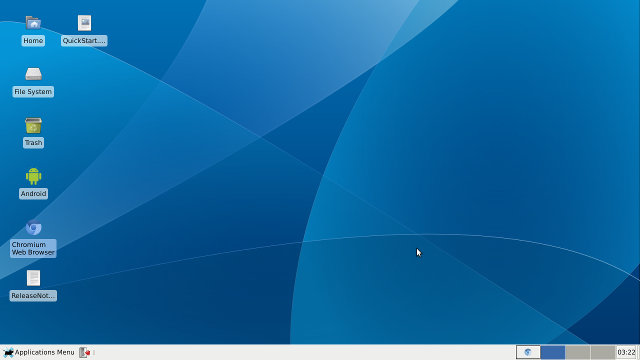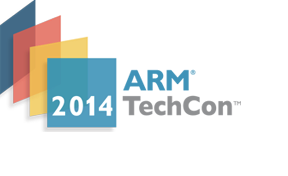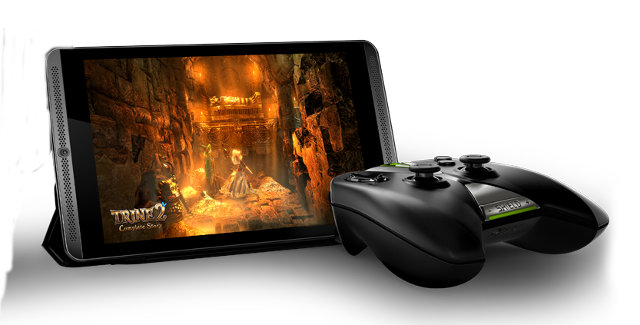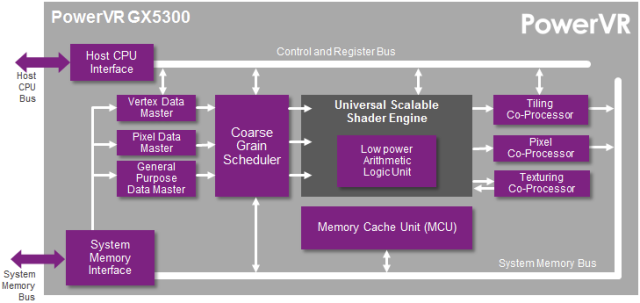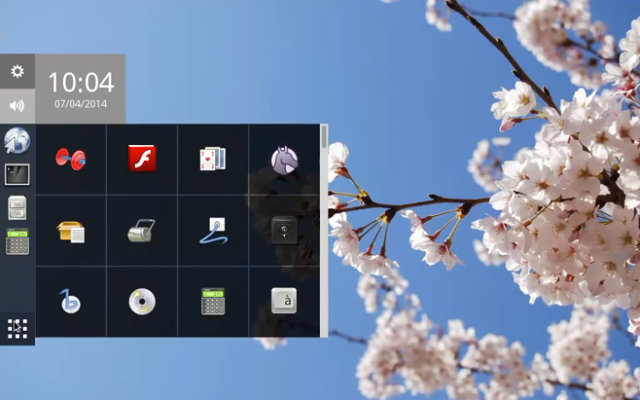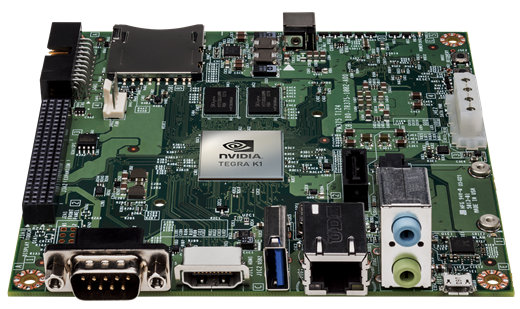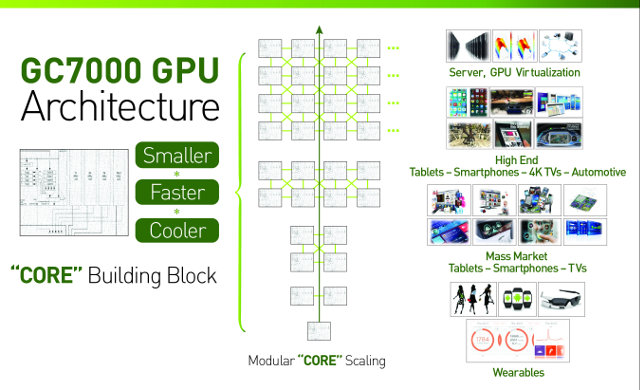Earlier this week, I wrote about VolksPC mini PC running Debian and Android simultaneously, and the developers decided to send me a unit for testing. The hardware I received is the popular MK808 mini PC based on Rockchip RK3066 with 1Gb RAM, and 8 GB RAM, but loaded with MicroXwin unified distribution. MicroXwin is an implementation of Windows X that’s not using a client/server protocol, for instead communicates directly with the drivers for better performance, especially on low-end hardware. I connected MK808 to my HDMI TV, added a USB hub to connect a USB keyboard as well as Mele Air Mouse, and powered up the device. The boot to Debian takes about 30 seconds, and 50 seconds for Android. As you boot it will enter in Debian with XFCE desktop environment, and you’ll notice two files, namely the Quick Start Guide and Release Notes that explain how to get started […]
ARM TechCon 2014 Schedule – 64-Bit, IoT, Optimization & Debugging, Security and More
ARM Technology Conference (TechCon) 2014 will take place on October 1 – 3, 2014, in Santa Clara, and as every year, there will be a conference with various sessions for suitable engineers and managers, as well as an exposition where companies showcase their latest ARM based products and solutions. The detailed schedule for the conference has just been made available. Last year, there were 90 sessions organized into 15 tracks, but this year, despite received 300 applications, the organizers decided to scale it down a bit, and there will be 75 session in the following 11 tracks: Chip Implementation Debugging Graphics Heterogeneous Compute New Frontiers Power Efficiency Safety and Security Software Development and Optimization Software Optimization for Infrastructure and Cloud System Design Verification There are also some paid workshops that take all day with topics such as “Android (NDK) and ARM overview”, “ARM and the Internet of Things”, or “ARM […]
Nvidia Announces Tegra K1 based Shield Tablet with Game Controller and Stylus
After the Shield game console, Nvidia has now announced the Shield Tablet powered by Nvidia Tegra K1 quad core processor, and specifically designed for gamer with a kickstand to adjust the inclination of the 8″ display, and a Wi-Fi Direct game controller with low latency, including a built-in stereo headphone jack and microphone. Shield tablet specifications: SoC – NVIDIA Tegra K1 quad core Cortex A15 @ 2.2 GHz processor with a 192 core Kepler GPU System Memory – 2GB RAM Storage – 32 GB (WiFi+4G LTE) or 16 GB (WiFi-only), and micro SD slot Display – 8″ multi-touch display; 1920×1200 resolution Video Output – 1x mini HDMI output Audio I/O – Front facing stereo speakers, dual bass reflex port with built-in microphone, 3.5 mm stereo headphone jack with microphone support Connectivity – Wireless 802.11n 2×2 Mimo 2.4 GHz and 5 GHz Wi-Fi, Bluetooth 4.0 LE and GPS / GLONASS Cellular […]
Imagination Technologies Unveils Low Power Low Footprint PowerVR GX5300 GPU for Wearables
Up to now most wearables are based on MCU solutions or derived from mobile platforms, which may either not provide the advanced features required by users, or consume too much power and take more space than needed. With Ineda Dhanush and Mediatek Aster, we’ve already seen silicon vendors design wearables SoCs, and now Imagination Technologies has just announced PowerVR GX5300 GPU targeting wearables with support for OpenGL ES 2.0, 480p to 720p resolution, and using 0.55mm2 silicon area based on 28nm process. PowerVR GX5300 GPU will be support Android, Android Wear, and Linux based operation systems, and according to the company has the following key features: Unified shaders – The TBDR graphics architecture offers unified shaders where vertex, pixel and GPU compute resources are scaled simultaneously. Low power and high precision graphics – All PowerVR GPUs offer a mix of low (FP16) and high precision (FP32) rendering and implement the […]
Maynard is a Wayland based Lightweight Desktop Environment Designed for the Raspberry Pi and Lower-end Hardware
With 3 millions board already sold, the Raspberry Pi board is clearly the most popular ARM Linux development board, and must be one of the most successful Linux device that’s designed to run a Desktop environment. However, the Broadcom BCM2835 processor and lowly 512MB makes it hard to run fully fledge desktop environment such as KDE and Gnome, so most people run LXDE via Raspbian operating systems, and it is much more manageable. However LXDE does not support Wayland, which is supposed to replace the X windows system, and it may not look as nice as it could. So the Raspberry Pi foundation and Collaborra have worked together on a new desktop environment called Maynard that leverages Wayland, and is supposed to be “functional, light and pretty”. This Wayland implementation is based on Weston + GTK, and is using the hardware video scaler (HVS) found in Broadcom BCM2835 to make […]
Nvidia to Give Away 50 Jetson TK1 Development Boards
Nvidia Jetson TK1 is a development board powered by Tegra K1 quad core Cortex A15 SoC including a 192-core Kepler GPU. This is one the the best, if not the best, ARM platform when it comes to GPU performance, GPGPU capabilities, and the only one I know of that supports OpenGL 4.4 “Desktop”, as well as Nvidia’s CUDA 6.0. You can buy the board for $192, but if you are a developer and have a project that could leverage and showcase Tegra K1 capabilities for computer vision solutions for robotics, medical devices, military, and automotive applications, you may well get one board for free via Nvidia’s Tegra K1 CUDA Vision Challenge. To apply, you need to submit your proposal via Nvidia’s TK1 vision challenge page by April 30, 2014. Please note, the contest is only open to US residents. The company will then consider the various proposals based on innovativeness, […]
Vivante Unveils Details About GC7000 Series GPU IP Family
Earlier this month, Vivante Corporation has announced several silicon partner integrations (but no names given) of its GC7000 Series GPU IP into SoCs targeting wearables, mobile, automotive, and 4K TV products, and provided some more details about its GC7000 family which supports features such as OpenGL ES 3.1 API, and hardware TS/GS/CS (tessellation / geometry / compute shader) extensions for Android. According to the company, they key benefits of their GC7000 GPU IP can be summarized as follows: True GPU Scalability – GC7000 Series products support limited silicon area to match form factor and market requirements. Products can snap to grid starting at 3.0 mm2 (28 nm) for the smallest single GPU GC7000 instance and grow in simple modular fashion for high end implementations to achieve what the company’s claims to be the the industry’s best PPA (power/performance/area). Smallest Licensable OpenGL ES 3.1 Cores with Geometry, Tessellation, and Compute Shaders […]
Embedded Linux Conference 2014 Schedule
The Tenth Embedded Linux Conference (ELC 2014) will take place on April 29 – May 1, 2014 at the San Jose Marriott in San Jose, California. The event will feature 90+ sessions on embedded Linux, Android and IoT with over 450 attendees expected to attend. It will also be co-located with Android Builders Summit and the AllSeen Alliance Hackfest. Even if you can’t attend it’s still interesting to see what will be discussed at the event to get a grasp of on-going developments, learn a few things about different optimization techniques, and so on. So I’ve gone through the sessions’ description, and I’ve designed my own virtual schedule with sessions that could be of interest. April 29 9:00 – 9:30 – Keynote: The Paradox of embedded and Open Source by Tim Bird, Sony Mobile Linux has taken the embedded world by storm. Billions (with a ‘B’) of devices have now shipped […]


